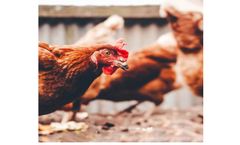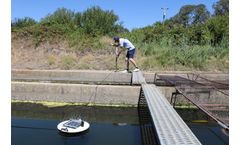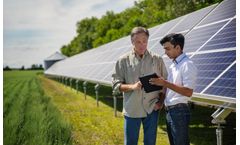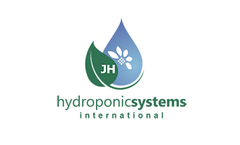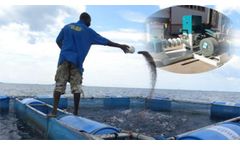Intensively Farmed Articles & Analysis
44 articles found
In this article, we will explore the impact of AI on intensive farming, examining the benefits, challenges, and potential future implications. ...
These farming methods are often considered more humane and sustainable than intensive battery farming, but also present their own challenges. ...
In the modern context, raising laying hens has become a topic of great interest, with an increasing focus on organic egg production and free-range farming. These farming methods are often seen as more humane and sustainable than intensive battery farming, but they also present their own unique challenges. ...
The cost of upgrading farms using modern technology can be significant. Fortunately, there are a number of Canadian government grants for farmers, ranchers, and producers to alleviate these financial burdens. Technology plays a major role today in enhancing a farm’s production efficiency, yields and profits over the ...
Aquasend Beacon® Installed at Global Organic Farm, Inc. Global Organic Farm, Inc., an aquaculture farm in Desert Center, CA, owned and operated by Gwan Thio, recently deployed an Aquasend Beacon.The initial deployment consisted of one buoy in one pond. ...
ByAquasend
Farm management software takes collaboration between your on-farm team and trusted advisors to the next level They say two heads are better than one. For today’s progressive farmer, this sentiment couldn’t be more true. With land values, input costs, machinery pricing and an increasingly competitive global market, maintaining an edge has never been so important to your operation. ...
Mobile technology puts the farm in your hand Farmers may obtain a detailed image of the state of their farming company from the palm of their hand. Farmers can use mobile applications to gather, receive, and display on-farm data, manage on-farm technologies, connect with their team or external consultants, and obtain pertinent ...
It may include part of the solution to how agriculture can adapt to the effects of climate change. Potential of Precision farming in Climate Smart Agriculture for farmers Precision farming, often known as precision agriculture, has been a growing technology field since the 1990s. ...
Moreover, we are currently developing new systems that work hand in hand with technological advances applied to intensive and protected agriculture of a wide range of crops. ...
Outbreaks of locust swarms in Africa, Asia and the Middle East have epitomised the essential need for indoor farming. Unseasonal rains caused by global warming, have aided the spread of desert locusts which would normally have died out in the dry season. Ethiopia and Somalia are currently experiencing their worst outbreak in twenty-five years, while Kenya is experiencing its worst infestation in ...
This causes the rapid development of intensive shrimp farming. Feed pellet costs of shrimps account for a large proportion of shrimp farming. ...
Since their appearance, the Spacers have marked a turning point in the efficiency of hydroponic cultivation drainage systems. There are significant advantages to their use and, at the end of the cycle, they have a positive impact on crop quality and yield. The main advantages of Spacers include good root aeration, separation of roots from drainage water (drain spacer) and improved leachate ...
The majority of poultry are raised on large factory farms using intensive farming techniques. The introduction to new technologies in the poultry sector has allowed large commercial farms to produce more stock. ...
Curtis Stone, a Canadian farmer and owner of Green City Acres has utilised the SPIN farming method which promotes intensive multi-locational farming in dense urban areas. ...
The natural conditions in which plants and trees grow are neither uniform nor controlled. Many changes or fluctuations, even if they are temporary, can have a negative impact on and stress plants. The factors which can lead to stress can be one of two types: abiotic or biotic. Stress can have serious repercussions on various phases of a plant’s growth and, ultimately, crop productivity. ...
The natural conditions in which plants and trees grow are neither uniform nor controlled. Many changes or fluctuations, even if they are temporary, can have a negative impact on and stress plants. The factors which can lead to stress can be one of two types: abiotic or biotic. Stress can have serious repercussions on various phases of a plant’s growth and, ultimately, crop productivity. ...
Client Institute of Field and Vegetable Crops Croatian Agricultural Land Agency Financed by The European Union from the Fund for the Serbia-Croatia cross-border cooperation Countries Republic of Serbia and Republic of Croatia Background project The Danube region is a major international hydrological basin and ecological corridor. This requires a regional approach to nature ...
On the agricultural sector, biogas plants are an additional source of income on many farms besides crop production and livestock husbandry. When generating power and heat from biomass in biogas plants, digestates with a dry matter content of 5 to 15 per cent arise – this is similar to slurry. On the one hand, enough storage space for digestates has to be available and on ...
This has caused farmers to abandon traditional methods in favour of the intensive farming we see employed today resulting in greater agricultural waste and pollution. Agricultural waste is produced as a result of various agricultural operations and includes manure and other wastes from farms, poultry houses and slaughterhouses. ...
At a 2014 forum held in Rome and organised by the UN Food & Agriculture Organisation (FAO), Maria — Helena Semedo gave a stark warning to all those attending that it takes 1,000 years to generate 3 centimetres of top soil and approximately one-third has been lost. If the present rate of soil degradation continued, all the World’s topsoil would be gone within 60 years. She went to ...



